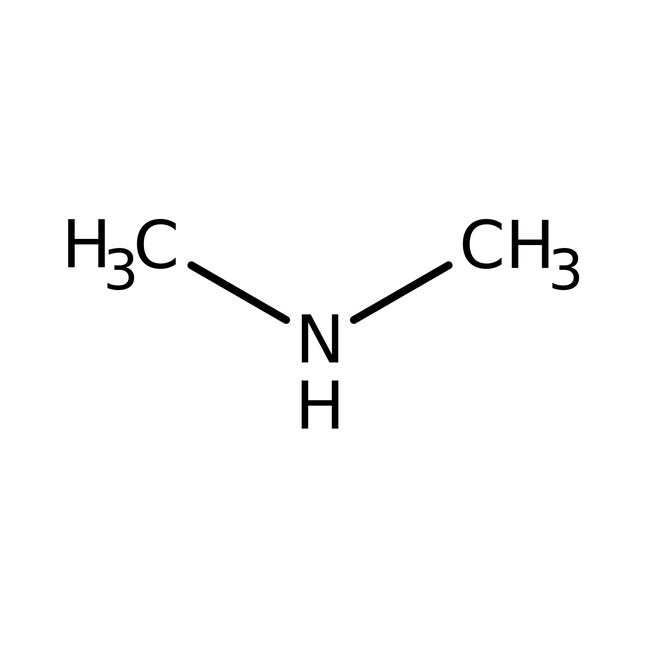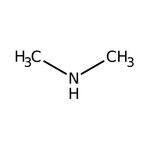Search Thermo Fisher Scientific
Dimethylamin, 2M in THF, Thermo Scientific Chemicals



Dimethylamin, 2M in THF, Thermo Scientific Chemicals
Chemikalien-Kennzeichnungen
Spezifikationen
Beschreibung
This Thermo Scientific Chemicals brand product was originally part of the Alfa Aesar product portfolio. Some documentation and label information may refer to the legacy brand. The original Alfa Aesar product / item code or SKU reference has not changed as a part of the brand transition to Thermo Scientific Chemicals.
Dimethylamin ist ein Vorläufer mehrerer industriell bedeutender Verbindungen. Es reagiert mit Kohlenstoffdisulfid, um Dimethyldithiocarbamat zu ergeben, ein Vorläufer einer Familie von Chemikalien, die bei der Vulkanisierung von Gummi weit verbreitet sind. Es ist Rohstoff für die Herstellung vieler agrichemischer und pharmazeutischer Produkte, wie Dimefox und Diphenhydramin. Das Tensid Lauryldimethylaminoxid findet sich in Seifen und Reinigungsmitteln.
Löslichkeit
Vollständig mit Wasser mischbar.
Hinweise
Hygroskopisch. Temperaturempfindlich. Kühl lagern. Behälter an einem trockenen und gut belüfteten Ort dicht verschlossen halten. Nicht in der Nähe von starken Oxidationsmitteln, Säuren, Wasser, Feuchtigkeit, Quecksilber, Chlor, Kupfer und Kupferverbindungen lagern.
Abbildungen
Dokumente und Downloads
Zertifikate
Häufig gestellte Fragen (FAQ)
Zitierungen und Referenzen
Sicherheit und Handhabung
Classification of the substance or mixture
CLP classification - Regulation(EC) No 1272/2008
Label Elements
Signal Word
Danger
Hazard Statements
H301 + H311 + H331 - Toxic if swallowed, in contact with skin or if inhaled
H314 - Causes severe skin burns and eye damage
H335 - May cause respiratory irritation
H370 - Causes damage to organs
Physical Hazards
H225 - Highly flammable liquid and vapor
Precautionary Statements
P210 - Keep away from heat, hot surfaces, sparks, open flames and other ignition sources. No smoking
P280 - Wear protective gloves/protective clothing/eye protection/face protection
P301 + P330 + P331 - IF SWALLOWED: Rinse mouth. Do NOT induce vomiting
P303 + P361 + P353 - IF ON SKIN (or hair): Take off immediately all contaminated clothing. Rinse skin with water or shower
P305 + P351 + P338 - IF IN EYES: Rinse cautiously with water for several minutes. Remove contact lenses, if present and easy to do. Continue rinsing
P310 - Immediately call a POISON CENTER or doctor/physician